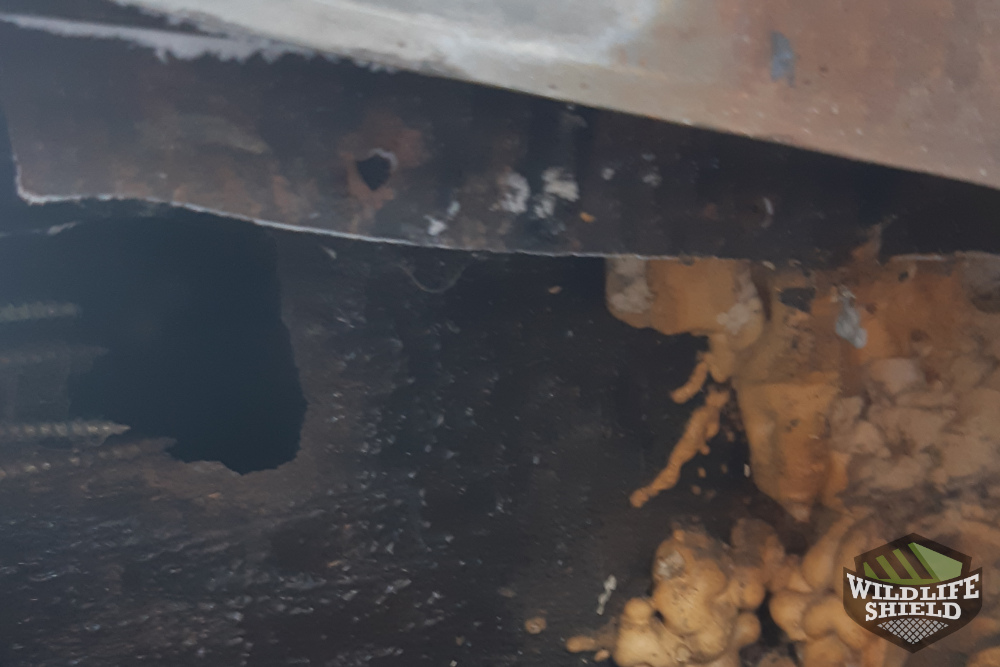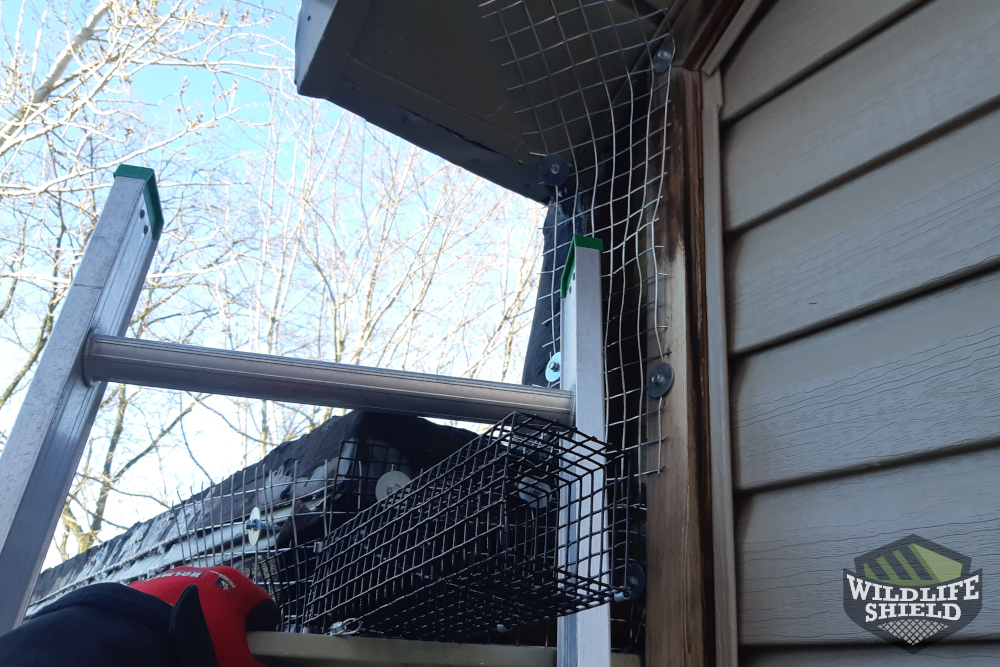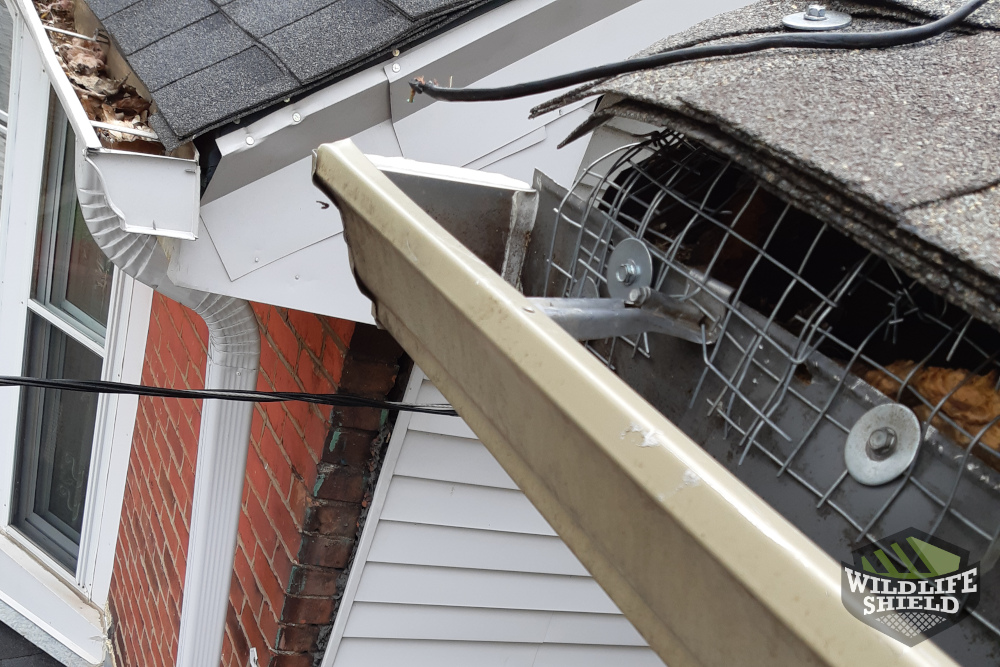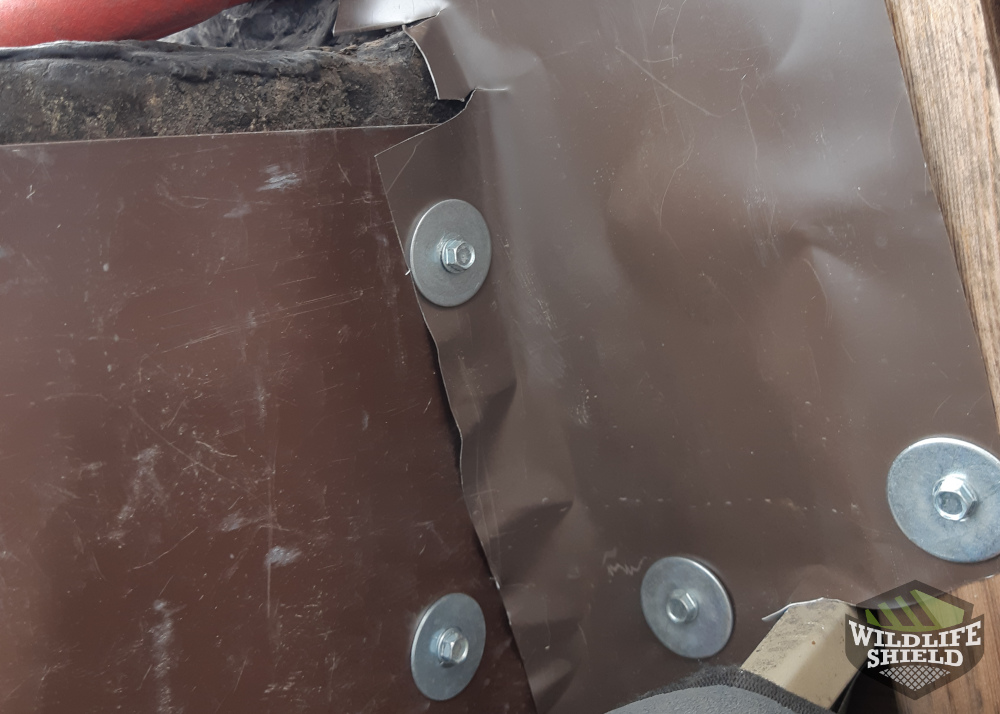This article details a squirrel removal and wildlife-proofing job in Toronto. Squirrels repeatedly broke through the roof of this family’s home to reach the attic, chewing their way through the roof’s edge and causing damage. After multiple visits and a comprehensive exclusion of the roof’s edge, the squirrels have since left this property alone. If there are squirrels on your property and you want them out, reach out to Squirrel Control today.
Inspection and Recommendations
The homeowners in this case first called Squirrel Control in late winter, reporting that they had seen a squirrel climb into a soffit. It had been about a week since they saw the animal climb into the roof, and they could hear it making noises in the attic. Squirrel invasions are unfortunately quite common in Toronto, especially in late winter and spring when females need a place to nest. A technician quickly came to the property to inspect the situation and come up with a removal plan.
No matter the job, our technicians perform thorough inspections to find exactly where the animals are nesting. In this case, the professional on duty found the squirrel’s entry point along the edge of the roof on the first floor. While there was a gap in the soffit above, the animal was nesting in the roof below. This is a common nesting site as the edges of the roof sometimes split away from the framing of the house with time, creating a gap for squirrels to gnaw open and climb into the attic.

Along with the opening, the technician noted that the roof’s edge was vulnerable to additional break-ins. The areas in which the soffits met the roof below were also susceptible to squirrels and raccoons hoping to nest in the attic. As such, the technician recommended removing the squirrel with the use of a one-way door, then sealing these other potential entry points with mesh or flashing. The homeowner then agreed to go ahead with the removal of the squirrels but wanted more time to decide on the additional exclusion.
Initial Removal and Follow-ups
Immediately after the inspection, the wildlife removal technician excluded the gap in the soffit with galvanized steel mesh, then installed a one-way door to the squirrel’s entry point. Galvanized steel is an excellent material that is weather-resistant and strong enough to withstand the chewing and tearing of wild animals. The one-way door consisted of a mesh tube with a flap inside it that swings outward, which would let the squirrel exit safely.

The squirrel was expected to leave sometime within a few days or a few weeks. Squirrels must exit their nests to feed, even during winter, so the animal would probably be gone soon. The technician discussed this with the homeowners and asked them to continue listening for squirrel sounds in the attic.
Just over two weeks later, the homeowners called us back to say that they could still hear squirrels making noises in the attic. Though squirrels can take some time leaving, this was an unusually long amount of time, so a technician quickly returned to investigate. This time, a squirrel had chewed its way through the roof’s edge on another corner of the roof. This may have been the same squirrel that had broken in the first time as squirrels will sometimes come right back to their nests after they have been evicted.
To get rid of the squirrel, the technician installed another one-way door to the new entrance but left the old one up just in case. The homeowner then agreed to exclude the edges of the roof with mesh so that this would not happen again. A total of 18 feet of mesh were drilled into the edges of the roof to keep squirrels out.


Remarkably, the evicted squirrel got back in again. Another two weeks later, after the second one-way door was installed, the squirrel had chewed its way through the roof right next to the one-way door. This was a determined animal. It had peeled back the shingles above the roof’s edge and chewed its way through the wood. More mesh was installed along the roof’s edge and everyone waited for the squirrel to leave.

Conclusion
Finally, by mid-April, the noises stopped. The squirrel in this case likely found that the roof was too difficult to break into and found another place to live. A technician returned to the property, removed the one-way doors, then replaced them with galvanized steel mesh and flashing so that no more squirrels would use these entry points.


This case study shows just how important it is to maintain your roof and exclude it from squirrels. These are persistent creatures that can chew through practically anything. The squirrel in this case was attracted to the attic and did whatever it could to stay. It was only after repeated eviction and a full exclusion of the roof’s edge that it was gone. If you have been struggling with a squirrel problem, or if you are interested in keeping them out of your attic, call Squirrel Control. We provide comprehensive wildlife solutions that are guaranteed and backed with a 2-year warranty.